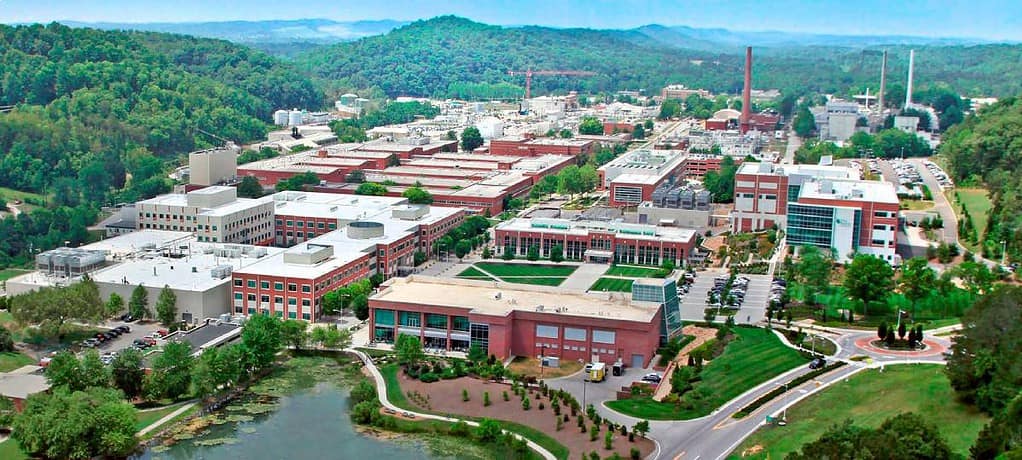Kris Gaines is on a nonproliferation mission: to make it easier for more countries to eliminate highly enriched uranium, or HEU, thus neutralizing the inherent threat of its potential for nefarious use. As a nuclear nonproliferation specialist and project manager at the Department of Energy’s Oak Ridge National Laboratory, Gaines leads aspects of an important project designed to eliminate spent HEU fuel from Kazakhstan.
Developed through a collaboration with the National Nuclear Security Administration (NNSA), the International Atomic Energy Agency (IAEA), Idaho National Laboratory, ORNL, and the National Nuclear Center (NNC) of the Republic of Kazakhstan — owner of the Impulse Graphite Reactor (IGR) and its fuel, on which the project is centered — this new technology is a promising solution for safeguarding spent HEU fuel around the world.
Fueling reactors such as the Kazakh IGR requires HEU, which has been “enriched” to contain greater than or equal to 90% of the fissile U-235 isotope, as opposed to low-enriched uranium, or LEU (equal to or less than 20%). This more potent HEU enables a range of vital materials research and scientific exploration. However, once this fuel has been used and is removed from the reactor, it is known as “spent” fuel, which remains radioactive and must be safely stored or reprocessed into safer forms.
Once it is spent, or irradiated, the ability to down-blend it into otherwise useful material is complicated. To address these challenges and decrease risks posed by the IGR’s spent fuel, NNSA, DOE and the Kazakhstan Ministry of Energy collaborated to find a solution for in-country elimination of the spent HEU fuel. The result is a unique new down-blending and cementation technology that readies the fuel for safe, long-term storage.
“Due to the type of fuel, other down-blending technologies like ‘melt dilute’ aren’t feasible options because graphite fuel won’t melt,” said Gaines. “This fuel will be repackaged for batch operations and sent through a large crusher/grinder until it is ground into very fine particles and mixed with natural or depleted uranium to down-blend it from ≥90% to ≤5% enrichment. The fuel is then transferred to a sealed drum at the mixing and cementation station, where it will be mixed with cement and other additives by in-drum mixing paddles to create unrecoverable, uniformly dispersed low-level waste as a concrete-filled drum.”
This first-of-its-kind technology helps to dramatically decrease risks posed by the spent HEU, lowering its enrichment level far below the LEU threshold of 20%. Down-blending irradiated graphite fuel removes the need for IAEA safeguards and renders it virtually unrecoverable through cementation.
Though the new technology is not yet in place permanently, the necessary equipment has been fabricated and installed at a temporary location in Kazakhstan. Plans for the new technology’s use there include continued development of the permanent destination facility, ongoing operator training programs and continual fabrication of mixing drums for further use in the process before the system is moved to its intended site.
Gaines is encouraged by the new process and its potential for use elsewhere with other types of fuels. “This technology is already being considered for the fuel from Kazakhstan’s other reactor, IVG.1M. We are currently working with NNC to conduct experiments on both melt-dilute and oxidation of this fuel. Preliminary results show that oxidation may be the best option, as the oxidized powder would then be run through the same system we are using for the IGR fuel,” he said.
Prior to implementation and wider use of the new technology, however, the team needed to convince key stakeholders that their solution was effective, safe and affordable. An idea to communicate these benefits through a scaled-down, 3D-printed physical model set the stage for an impressive partnership at ORNL — one with significant international impact.
This Oak Ridge National Laboratory news article "Nonproliferation innovation at ORNL makes international impact at Kazakh nuclear site" was originally found on https://www.ornl.gov/news


